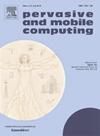灾后响应中的集体受害者计数:一种基于BLE自发网络的分布式节能算法
IF 3.5
3区 计算机科学
Q2 COMPUTER SCIENCE, INFORMATION SYSTEMS
引用次数: 0
摘要
准确确定受紧急情况影响的人数对于在灾害期间部署有效的应对措施至关重要。在这种紧急情况下,蜂窝和Wi-Fi网络等传统解决方案往往因基础设施大面积受损或连接功能不佳而失效,这促使人们探索更有弹性的方法。本文提出了一种新颖的解决方案,利用蓝牙低功耗(BLE)技术和完全由移动和可穿戴设备组成的分散网络,在不依赖外部通信设备或专业人员的情况下自主计数个体。这种计数利用了这些网络中设备之间不协调的中继通信,使我们能够将计数能力扩展到救援人员的直接范围之外。采用了一种经过正式评估、实验验证和保护隐私的计数算法,即使在大规模场景中也能显示出快速收敛和高精度。本文章由计算机程序翻译,如有差异,请以英文原文为准。
Collective victim counting in post-disaster response: A distributed, power-efficient algorithm via BLE spontaneous networks
Accurately determining the number of people affected by emergencies is essential for deploying effective response measures during disasters. Traditional solutions like cellular and Wi-Fi networks are often rendered ineffective during such emergencies due to widespread infrastructure damage or non-functional connectivity, prompting the exploration of more resilient methods. This paper proposes a novel solution utilizing Bluetooth Low Energy (BLE) technology and decentralized networks composed entirely of mobile and wearable devices to count individuals autonomously without reliance on external communication equipment or specialized personnel. This count leverages uncoordinated relayed communication among devices within these networks, enabling us to extend our counting capabilities well beyond the direct range of rescuers. A formally evaluated, experimentally validated, and privacy-preserving counting algorithm that demonstrates rapid convergence and high accuracy even in large-scale scenarios is employed.
求助全文
通过发布文献求助,成功后即可免费获取论文全文。
去求助
来源期刊

Pervasive and Mobile Computing
COMPUTER SCIENCE, INFORMATION SYSTEMS-TELECOMMUNICATIONS
CiteScore
7.70
自引率
2.30%
发文量
80
审稿时长
68 days
期刊介绍:
As envisioned by Mark Weiser as early as 1991, pervasive computing systems and services have truly become integral parts of our daily lives. Tremendous developments in a multitude of technologies ranging from personalized and embedded smart devices (e.g., smartphones, sensors, wearables, IoTs, etc.) to ubiquitous connectivity, via a variety of wireless mobile communications and cognitive networking infrastructures, to advanced computing techniques (including edge, fog and cloud) and user-friendly middleware services and platforms have significantly contributed to the unprecedented advances in pervasive and mobile computing. Cutting-edge applications and paradigms have evolved, such as cyber-physical systems and smart environments (e.g., smart city, smart energy, smart transportation, smart healthcare, etc.) that also involve human in the loop through social interactions and participatory and/or mobile crowd sensing, for example. The goal of pervasive computing systems is to improve human experience and quality of life, without explicit awareness of the underlying communications and computing technologies.
The Pervasive and Mobile Computing Journal (PMC) is a high-impact, peer-reviewed technical journal that publishes high-quality scientific articles spanning theory and practice, and covering all aspects of pervasive and mobile computing and systems.
 求助内容:
求助内容: 应助结果提醒方式:
应助结果提醒方式:


